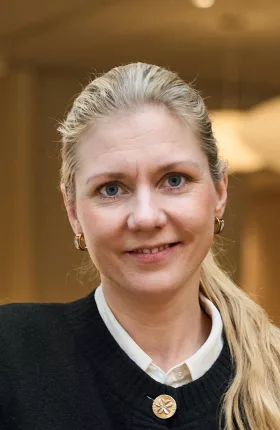Circularity is a highly effective approach to reducing material consumption and greenhouse gas emissions, and halting the loss of biodiversity. For companies, it enables top-line growth, lowers costs, and makes supply chains more resilient. So why are the Nordics, with their well-earned reputation for sustainability, lagging in this area? Ingrid Cornander, Partner in BCG’s Stockholm office, and our Nordic circularity lead, explains how Nordic businesses can close the gap.
The Nordics are known for being forerunners in sustainability, but we are not leading the charge in circularity. This is an approach where products are used and repaired for as long as possible and then deconstructed so the materials can be re-used or recycled. In the Nordics, our abundance of natural resources has served as a catalyst for innovation and development, but may also have made us a bit complacent, because there hasn’t been much pressure on us to find more resource-efficient solutions. That’s one reason—among several—why we are playing catch-up in circularity.
Explore the boxes for a deep dive into circularity in the Nordics:
However, awareness of the benefits of circularity is becoming more widespread among the Nordic businesses I work with. In the past, fewer leaders were clear on the business case, but most now know what the potential benefits are. Today, the more common questions from executives are about how to actually get started, how to scale up, how to find the right partners. So things are definitely moving in the right direction.
Similarly, there was once a common preconception that the impact of circularity is hard to measure. If this were true, reluctance to embrace the approach would be somewhat understandable. But it is decidedly not true. Nordic companies are realizing that circularity can help generate top-line growth, reduce costs, and make their supply chains more resilient in the face of disruption—all of which can be tracked and measured.
Making It Happen
Once companies are on board, the practical challenge is knowing where to start. We tell leaders that they can—and should—move quickly on circularity. We believe that the Nordics, and Europe more broadly, are headed towards full circularity, and that acting now will result in a competitive advantage. No business wants to be left behind. As companies see the value pools that circularity opens up, they embrace the mindset. But before they dive in, they need to take on the slightly unglamorous task of getting a clear-headed view of where they stand with regard to circularity. You can’t solve what you don’t fully grasp.
The work starts with questions. Where are we now? What is our current state of circularity? We work with companies to answer these questions comprehensively. We get down to details about resources flowing into the business, how long they are used for, and what happens to them at the end of their useful life. There are also qualitative aspects to our work, to understand the degree of circular thinking within the company. The important point is to give management the information they need to make strategic choices and put their weight behind the most promising and value-generating initiatives.
Closing the Circle
Once they have their baseline, companies need to set their ambition level. Sometimes, the urge to jump right in results in a scattering of smaller initiatives or projects, for example, around recycling. Recycling is of course a positive step. But for real impact, circularity has to be holistic and applied at scale. So we see some companies setting a target of 80% of newly developed products designed through a circular approach that incorporates the EU’s 2030 ecodesign principles. Once the ambition is clear, they need to determine what kinds of initiatives to pursue, and of course, set up a governance structure. Lastly, they need an action plan for implementation, and for measuring and tracking progress. We work with companies to narrow, slow, or close loops, through a combination of operational changes, partnerships, and collaborations.
A great example of where we have had a major impact is our work with Swedish outdoor clothing company Houdini, who recently launched their store “Houdini Circle.” We supported Houdini with the pricing strategy for different product categories and the backend capabilities required to enable check-out of products from these categories. Going from linear to circular by offering secondhand, rental, subscription and repair models, Houdini is “slowing the loops” by expanding the lifetime of its garments. This is in line with the company’s philosophy of doing more with less, and also enables responsible consumer behavior.
Successful circular businesses outside of the Nordics, like Patagonia, with its recycled material input, and Hilti, which offers product as a service through leasing, demonstrate that tying circularity strategy to value creation is the recipe for success. We work with clients to help them make these connections—that’s where circularity becomes a powerful force.
The Next Horizon
When I started in sustainability 20 years ago I focused on cradle-to-cradle thinking, working in particular with the most progressive companies and government organizations. I’ve been hooked on sustainability ever since. For a long time, most industry sectors were strongly focused on reducing their carbon impact. Now this tunnel vision is expanding to include areas such as biodiversity and circularity, which today frequently show up in companies’ strategies and in their reporting. New drivers have also emerged over the last decade, which has been particularly energizing. The European Union introduced its vision for the circular economy in 2014; a new circular economy action plan was launched in 2020; and then this year we saw the launch of an ISO standard, ISO 59020, related to circular economy. These initiatives are expanding circularity among a broader set of companies and sectors.
So overall I am optimistic, because the benefits of circularity for both businesses and the planet are now widely acknowledged, and there is huge potential to improve and to benefit from the opportunity.













